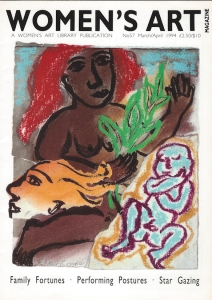
The desire to create this printed publication was Inspired by two decades of magazines produced by the Women’s Art (Slide) Library 1983-2003, now housed in Special Collections at Goldsmiths University and the exhibition zine by Beatrice Lily Lorigan and Halo Hughes for Re: Jacqueline Morreau- Mythologies and the Marginalised. Reading these gave us a strong connection to the artists, their work and the issues they wrote about. On the one hand the reassurance of common herstories and on the other an insight into how little has changed for women artists; red rags to a bull for women working on social change art projects!
Still we Rise brings together the voices of girls and women aged 8-80 on the challenges of achieving equality in 2018. Kim Piffy gives us a fresh perspective on the the term feminism as it relates to people in their twenties, Artivism by Grace Kress highlights the role art can play in changing society. Janet Currier, Rosy Wilson and Lizzie Philps examine the changing roles of women through the century and the impact of change on women’s lives and creative practices. Lizzie and I spent many hours with Althea Greenan, curator of the WAL archive, exploring the value and commonalities of collective art practice in the 1970s from a 2018 perspective.
We couldn’t resist adding a recipe and an agony aunt!
The Women’s Art Library began as an artists’ initiative that developed into an arts organisation publishing catalogues and books as well as a magazine from the early 1980s to 2002. The main purpose however was to provide a place for women artists to deposit unique documentation of their work. WAL collected personal files that functioned together as an alternative public space to view and experience women’s art. Thousands of artists from around the world are represented in some form in this collection.
The magazines produced by these feminist collectives over two decades are inspiring and encouraging. When you pick up an edition and thumb through, you can’t help noticing that there are ideas, ideals, conversations and questions that we are still asking each other today.





